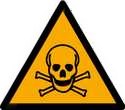The fact that people die from heavy alcohol abuse or an overdose of hard drugs is probably no news to any society. But what if a pathology report suddenly reveals that the cause of death is liver failure due to a paracetamol overdose? Actual cases in Germany demonstrate that some of the approximately 30,0003 over-the-counter medications and active ingredients can even be fatal.
People buy and order them. Online pharmacies offer a great way to stock up on painkillers, allergy and hay fever remedies, and sleep aids. After all, between 2013 and 2016, 12.25 million people over the age of 14 in Germany reported ordering their medications online.1 In a follow-up analysis, the Statista Research Department recently announced that approximately 2.9 million adults even exhibit "problematic medication use."2 This sounds alarming, and it is. In addition to prescription drugs, there are numerous active ingredients that can have toxic effects if consumed in excess. In the worst case, they can lead to death. Long-term use can also cause liver and kidney damage, especially in high doses.
 In our stressful times, there's rarely time to visit a doctor. You can't fall asleep, the cold won't go away. It's easy to be tempted to reach for "over-the-counter" remedies and active ingredients. However, with high doses, the good intention is lost, and it becomes life-threatening. A small excerpt of over-the-counter active ingredients:3
In our stressful times, there's rarely time to visit a doctor. You can't fall asleep, the cold won't go away. It's easy to be tempted to reach for "over-the-counter" remedies and active ingredients. However, with high doses, the good intention is lost, and it becomes life-threatening. A small excerpt of over-the-counter active ingredients:3
Ibuprofen: Although the active ingredient is considered well-tolerated and effective in relieving pain, it can have toxic effects in adults at a daily dose of 1200 mg and above, and in adolescents at as little as 30 mg per kilogram of body weight. Overconsumption is associated with metabolic acidosis, impaired consciousness, and, in the long term, the risk of liver damage and death.
Paracetamol: Also known as well-tolerated and one of the most popular painkillers. A daily dose of 6 grams or more can cause serious health problems, and 7.5 grams or more can even be fatal. Adolescents should never exceed a daily dose of 200 mg per kilogram of body weight. An overdose can lead to liver failure. In severe pain, it's easy to lose track of daily consumption.
Doxylamine: An active ingredient found in many sleeping pills. Serious consequences can be expected in adults with daily consumption of more than 15 mg per kilogram of body weight, and in adolescents, even 2 mg per kilogram of body weight. Children should avoid taking these sleeping pills! An overdose can quickly lead to fever, unconsciousness, and cardiac arrest.
Other substances of daily life:
Caffeine: This alkaloid is well-known and popular as a stimulant. A daily dose of 10 grams of this alkaloid can be fatal. This corresponds to approximately 200 large cups of espresso or 100 1-liter bottles of cola. However, health damage can occur from as little as 1 gram per day, and in adolescents from as little as 0.5 grams (approximately 5 liters of cola). It should also be noted that the combination of large amounts of caffeine and sugar has long-term health consequences, even at smaller amounts. Consumers of energy drinks, which are available in every supermarket, should carefully monitor their daily consumption. It should also be noted that caffeine is an additive in some over-the-counter medications.
Aspartame: This sweetener, which is 100 times sweeter than sugar, can have toxic effects in adolescents at doses of 5 mg and above, and in adults at 20 mg. Sweeteners should always be kept out of reach of children!
Salt: Sodium chloride (table salt) is not harmful in small amounts. Quite the opposite: our bodies depend on salt. However, only in tolerable amounts! Two to three tablespoons of salt (>40 grams) a day are already seriously harmful, and more than 10 tablespoons a day can even be fatal. Blood vessels constrict, and respiratory and cardiac arrest are not uncommon. Too much salt draws water from human cells. Adolescents should avoid very salty foods.
In particular, you should be careful about interactions with prescription medications. The effects of these medications may be mutually negated or intensified. In these cases, be sure to consult your doctor or pharmacist!
The insidious thing about these and other active ingredients is that health damage from long-term use, even in small amounts, is only evident after years. Adolescents may also be subject to different interactions, side effects, and consequences than adults. Parents should never attempt to estimate dosages if the package inserts do not contain information for children. Panic due to uncertainty about over-the-counter medications is also wrong. Paracetamol and ibuprofen are not only painkillers but also known for their fever-reducing properties. The use of conventional doses is more than justified in some cases.
---
1 Data Research Statista: "Online purchases of pharmaceuticals and medical devices in Germany 2013-2016", Nov. 2016.
2 Data Research Statista: "Hochrechnung zum Missbrauch verschiedener Substanzen in der deutschen Bevölkerung", März 2025
3 Magazin Welt der Wunder kompakt: "Wie giftig ist unsere Medizin?", Ausgabe 03/2025, S. 46-49
Lynch, Shalini. Medizinische Redaktion MSD Menual im Artikel: "Rezeptfreie Arzneimittel und damit verbundene Vorsichtsmaßnahmen", Merck Sharp & Dohme LLC, USA, 2022.
